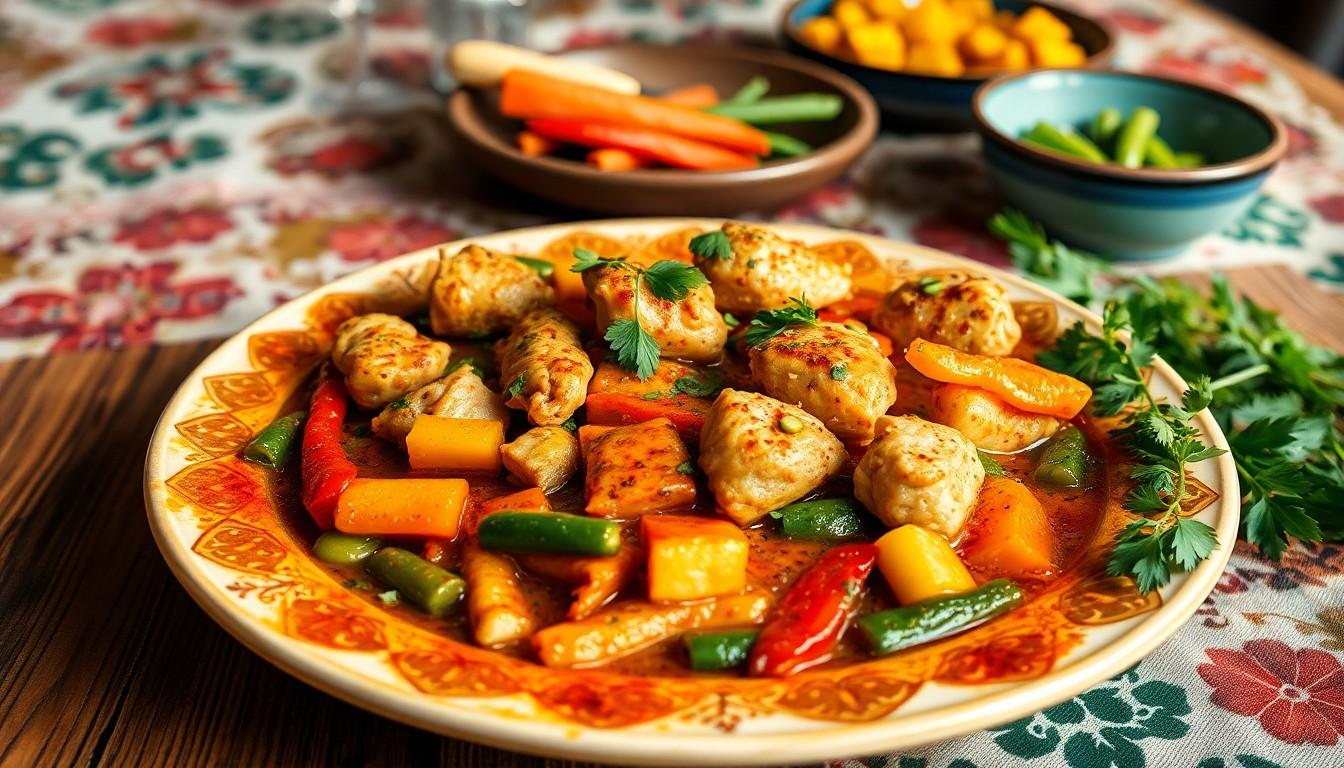Food has an uncanny ability to surprise us, and nothing does it quite like the bizarrely named dishes from around the world. Take “nillobada,” for example. This quirky food name not only piques curiosity but also invites adventurous eaters to explore its origins and flavors. What could it possibly be? A secret ingredient? An ancient recipe? Or just a clever way to get people talking?
Overview of Nillobada
Nillobada captivates with its unique combination of flavors and ingredients originating from regional culinary traditions. Found primarily in certain North African cuisines, this dish features a blend of spices that create a rich, aromatic experience. It typically includes vegetables like eggplant and bell peppers, offering a vibrant color palette and healthy nutrition.
The preparation method adds depth to nillobada, as it often involves slow-cooking to enhance the flavors. This cooking style allows the spices to meld beautifully, resulting in a satisfying dish. Adventurous eaters appreciate that nillobada represents a balance between hearty and light in texture, making it suitable for various palates.
Originating from local customs, the name “nillobada” carries cultural significance. Many believe the term reflects the communal and celebratory nature of dining in the community where it’s served. Accordingly, it may also be paired with traditional breads or grains, which complement its flavors.
Crafting nillobada can vary significantly, with regional variations influencing ingredient choices. Some recipes may introduce proteins such as lamb or chicken, providing additional richness. Exploring these variants showcases the diversity within this standout dish, inviting culinary exploration.
Nillobada inspires curiosity among food enthusiasts, prompting questions about its historical evolution. Each bite tells a story, connecting diners to the traditions and heritage that produced this exceptional recipe. Recognizing the broader significance of nillobada enhances the appreciation of its unusual name and distinctive taste.
Origin of Weird Food Names

Unique food names often reveal rich cultural stories and traditions behind them. “Nillobada” serves as a prime example, capturing the essence of its origins.
Cultural Significance
Cultural connections profoundly influence food names like nillobada. Communities use these names to express their values, celebrating ingredients and culinary practices. Shared meals become rituals, fostering bonding among family and friends. Nillobada embodies these communal aspects, inviting diners to savor not just a dish but their cultural heritage. Names often spark curiosity, leading food enthusiasts to explore flavors that symbolize the history of the people.
Regional Variations
Regional variations play a critical role in the preparation of nillobada. Ingredients tend to shift based on local tastes and available produce. Some regions may incorporate specific spices, while others might prioritize different vegetables or proteins like lamb or chicken. These variations not only enhance the dish’s appeal but also showcase the diversity within culinary practices. Each adaptation offers a glimpse into the area’s agricultural practices, shaping the flavors and textures diners experience across different cultures.
The Story Behind Nillobada
Nillobada’s name and ingredients tell a captivating story rich in cultural significance. This dish combines a variety of unique flavors that reflect its origins.
Unique Ingredients
Key ingredients in nillobada include vibrant vegetables such as eggplant and bell peppers. Spices play a crucial role, with combinations like cumin, coriander, and paprika enhancing the dish’s profile. Proteins vary by region, often featuring lamb or chicken that adds depth. Fresh herbs like parsley and cilantro impart freshness, balancing the dish’s hearty elements. Various grains and traditional breads accompany nillobada, providing texture and making it a complete meal. Seasonal produce showcases local agricultural practices, ensuring nillobada remains a true representation of its roots.
Preparation Methods
Preparation of nillobada focuses on slow cooking, allowing flavors to develop fully. Cooking methods often include braising or simmering, ensuring tenderness in meat and vegetables. Initial steps typically involve sautéing onions and garlic, building a strong flavor foundation. Layering spices during cooking deepens the aromatic experience, making each bite memorable. Some variations employ tagine cooking, which enhances moisture retention and infuses flavors. Serving nillobada hot emphasizes its comforting nature, inviting diners to relish the essence of community meals.
Popular Weird Food Names
Food names often spark curiosity about their origins and meanings. For instance, “haggis” refers to a traditional Scottish dish made from sheep’s pluck, encased in the animal’s stomach. Its distinct preparation method contributes to its unique taste and texture.
“Balut,” a popular street food in the Philippines, denotes a fertilized duck egg that develops into a chick. Consuming balut provides a mix of flavors and textures, appealing to adventurous eaters. Its popularity highlights the cultural significance of street food in local traditions.
“Stargazy pie” represents a Cornish dish featuring fish like sardines poking through a pastry crust. The name describes the fish staring skyward, adding a quirky twist to its presentation. This dish demonstrates the importance of visual elements in food, enhancing dining experiences.
“Jell-O salad” showcases a peculiar combination of gelatin with fruits or vegetables, often served at gatherings. The texture and bright colors add excitement to meals. This name reflects the cultural fun associated with holiday celebrations and potlucks.
“Spam musubi” combines spam and sushi rice wrapped in seaweed. Originating in Hawaii, this dish captures the unique fusion of cultures. Its name illustrates the integration of local ingredients with influences from Japanese cuisine.
Gourmet naming trends continue to evolve. “Unicorn toast,” colored with natural dyes and topped with edible glitter, represents modern food artistry. The visual appeal of such dishes emphasizes creativity in contemporary cuisine.
These food names reflect rich cultural stories and traditions, just like “nillobada.” The exploration of unusual food names invites food lovers to delve deeper into culinary histories and appreciate their distinctive qualities.
Conclusion
Exploring the world of unique food names like nillobada reveals a tapestry of cultural stories and culinary traditions. This dish not only tantalizes the taste buds but also invites diners to connect with their heritage through vibrant flavors and communal dining experiences.
As food enthusiasts venture into the realm of nillobada, they discover a deeper appreciation for the ingredients and preparation methods that define it. The journey through its rich history and cultural significance enriches the dining experience, encouraging a celebration of flavors that transcend borders.
Ultimately, nillobada serves as a reminder of the joy found in exploring the unusual and the delicious, inspiring culinary adventures that honor the past while delighting the present.




